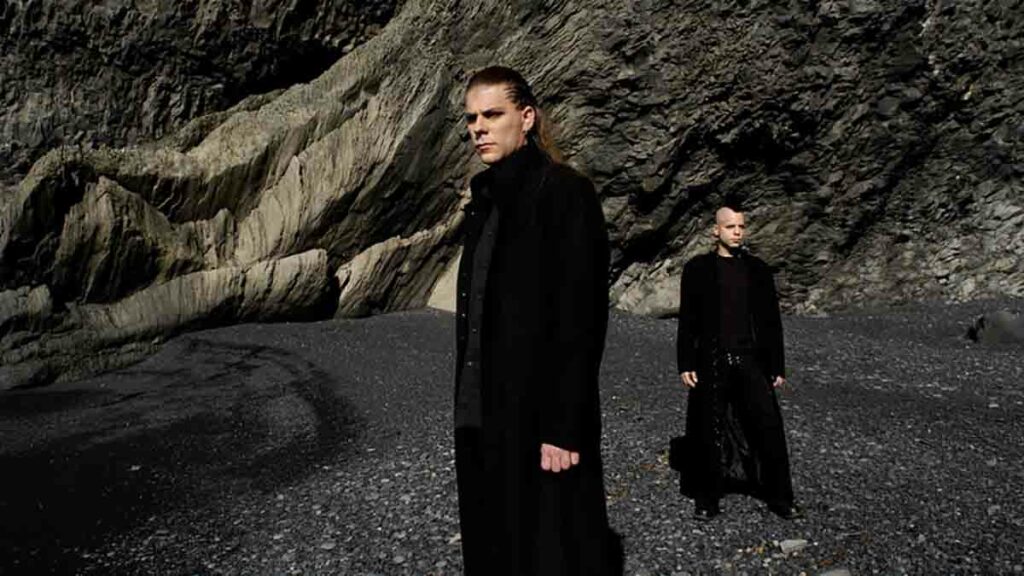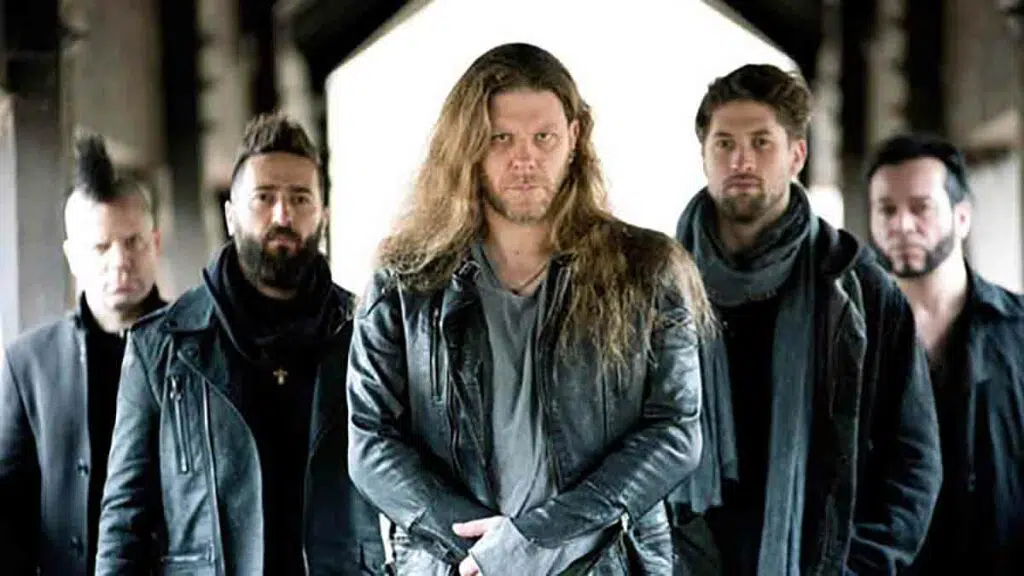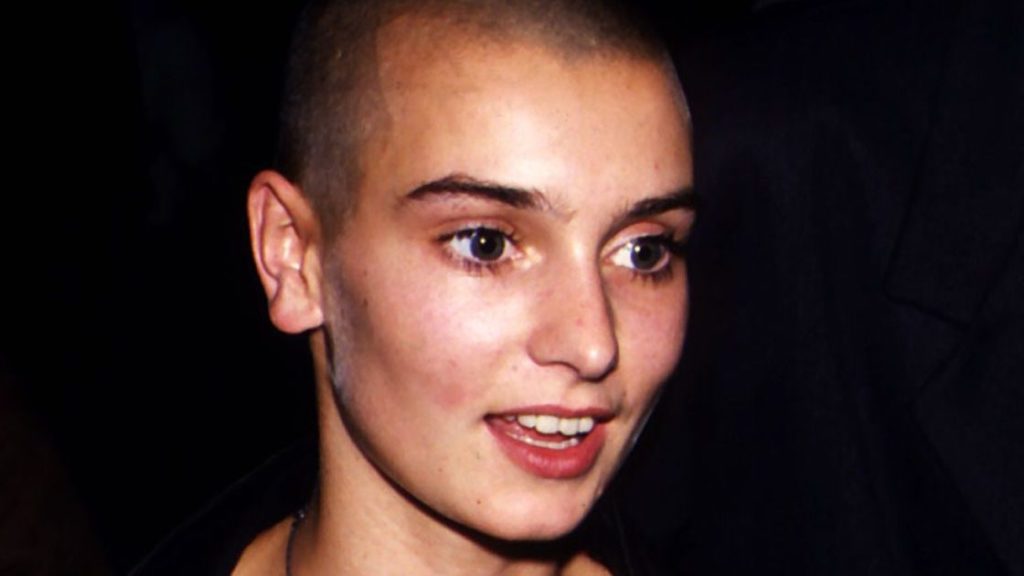Much has been written about Diary of Dreams. This is perhaps one of the most mysterious groups in the world. The genre or style of Diary of Dreams cannot be defined specifically. This is synth-pop, and gothic rock, and dark wave.
Over the years, countless speculations have been made and circulated by the international fan community, and many of them have been accepted as the ultimate truth. But are they really what they seem?
Is Diary of Dreams the second step into the world of music for mastermind Adrian Hates? Or is this group really a solo project, and all its further members are the pure imagination of their creator? Is he really crazy? Well, let's see. More than 15 years after the creation of this group, it's time to tell the real story.

Inspiration for Adrian Hates
Who would have thought that Diary of Dreams was originally a project without the use of any synthesizer. Back then, the band's sound featured only heavy guitar riffs.
The reason vocalist Adrian Hates' music took a different turn may be that he grew up listening to the symphonies of Beethoven (which he still prefers as one of his favorite compositions), Mozart, Vivaldi and other consummate classical composers.
In addition, he did not communicate much with modern music. He looked for harmony for his own music in the masters of the past. However, the musician had the previously mentioned classical guitar, which fascinated Adrian when he was nine years old.
Adrian studied hard to play it until he was 21 years old. So it's not too surprising that guitars still play an important role in the music of Diary of Dreams today, even though some people may have difficulty even hearing or recognizing this band.
Adrian Heights himself was born in Germany, the city of Düsseldorf.
privacy and talent
But just six years after his first musical forays - Adrian was 15 and living in a remote location in New York State - the boy learned about the key instruments that would become so important to him in the future.
His family moved to a lonely estate surrounded by several hectares of land. So no one could stop the creative teenager from leaving for his own world of music. Adrian himself said that since then he loves loneliness.
Many people lived in the house, but there were also many rooms. So, in one of them stood a large classical piano. Adrian at first liked to sit near him and just press different keys. In his own opinion, a person does not have to be a pianist to enjoy the sound of these chords. He soon began to transfer his guitar melodies to the piano.
Every child in their family received music lessons, so Adrian was no exception and began learning to play the piano.
At school, the guy also developed his creative skills. In particular, at school, children had an hour when they could write whatever they wanted. Here Adrian showed another of his talents - writing. The teacher constantly paid attention to the talented boy who wrote freely about everything. Other children had difficulty with this.

Formation of the group Diary of Dreams
In 1989, six musicians played all sorts of standard instruments, but no keyboards. Which is very surprising from a modern point of view regarding this particular group. They used guitars, bass, drums and vocals. But at first, Adrian was not a vocalist. The reason for this was quite logical, he was a classical guitarist and also acted as one of them in the band.
Although he described the music as completely anarchic, it was clearly shown at this early stage in the band's history that Adrian was prone to perfectionism and the pursuit of self-improvement at a high level. Should they cover other songs?
No, these were supposed to be compositions written by them personally, which were presented to the public by a young group with a constantly changing name. One such title was a song called Tagebuch der Träume (Dream Diary) which Adrian composed for himself. A simple guitar song had a pretty pretty title. Adrian got the feeling that it meant more than the title of the song.
Therefore, the title was translated into English. Adrian Hates chose to use Diary of Dreams as the stage name he worked under.
Studio recordings
In 1994, the first album of the group Cholymelan (an anagram of the word Melancholy - melancholy) was recorded on the Dion Fortune label. Encouraged by the album's success, Hates formed his own record label called Accession Records and released a series of albums over the following years.
The second album End of Flowers was released in 1996, expanding on the dark and gloomy sound of the previous work.

Bird Without Wings followed a year later, while the more experimental work Psychoma? Was recorded in 1998.
The next two albums One of 18 Angels and Freak Perfume (as well as its companion EP PaniK Manifesto) made more extensive use of electronic beats. This resulted in a more club sound and wider recognition for the band.
Their 2004 Nigredo (a concept album inspired by the mythology the band created) saw a move back to the concepts of the old, but still showcasing bursts of their dance-oriented sound. Songs from the Nigredo tour were later released on CD Alive and the companion DVD Nine In Numbers. In 2005, the Menschfeind EP was released.
The next full length album, Nekrolog 43, was released in 2007, offering a greater variety of moods and concepts than previous works.
On March 14, 2014, the studio album Elegies in Darkness was released.
Live performances
Diary of Dreams have announced that a short US tour is planned for 2019: Hell in Eden with dates coming in May 2019.
At concerts, Adrian Hates is assisted by guest session musicians. Most often it is a percussionist, guitarist and keyboardist. For 15 years of creative activity, the composition of the concert group has been constantly updated. The only "long-liver" is guitarist Gaun.A, who has been performing with the band since the late 90s.



